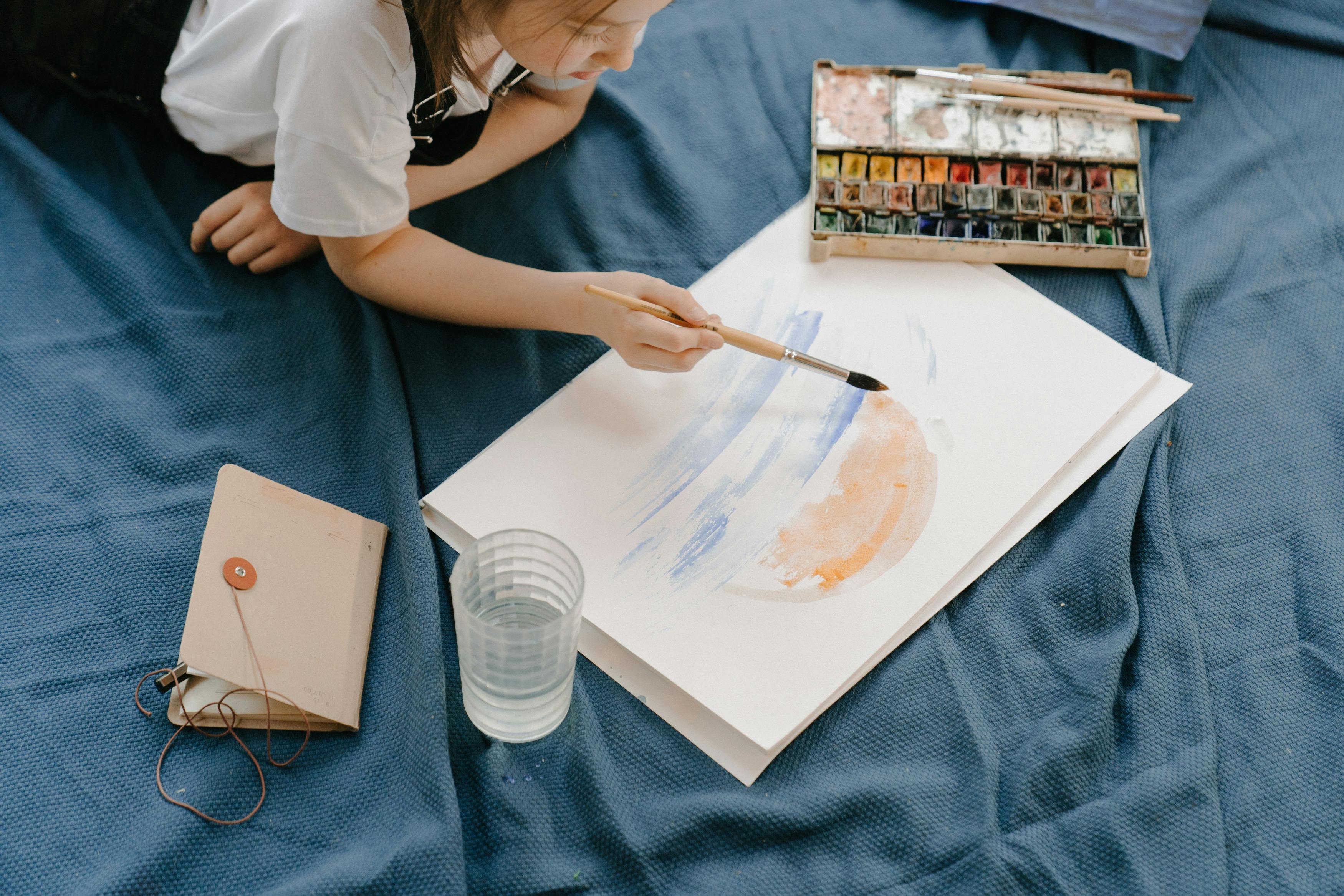Let’s make everyday images more extraordinary. There are some easy-to-learn everyday tips that can improve your basic photography quickly. I’m not one to “fix it in Photoshop” or “in the mix” as they say in the music business. As a professional, I want to do it right the first time in front of the camera. Downloading files and fixing stuff in post is too slow and sloppy for me. So here are eight tips to get you off to a good start.
Tip #1 Get Close, Get Off, Get On
Most of the people I observe stand too far away from the subject they are photographing. I’m sure it’s because they don’t want to draw attention to themselves; they want to take a quick photo and not be noticed or get in the way. But I say, “Get closer to your subject!”
Taking a moment to zoom in and not have so much of a distracting background greatly improves an image. Don’t be shy, move around and get a great picture, not just a good one. Cropping in post-production later is fine up to a point, but I’m all for getting it right the first time in-camera. Excessive cropping degrades the quality of the image by using only a small part of the file.
Speaking of getting in there, I was in Vegas and found a crowd of people looking at and taking photos of three living statues. These beautiful girls were dressed and painted in one color and looked like real statues. Only occasionally did they move very slightly. Like the English guard, they won’t even move to accept a tip or compliment. I carefully positioned myself in the center of the crowd and took a picture… well, okay, lots of pictures. After a few minutes I realized that the crowd had opened up for me and I had all the free space I wanted.
Try not to shoot everything at your foot level. Mix it up a bit and add interest to your images by lowering and shooting at the level of a child. I squat, kneel, and lay on my stomach (all of which is getting harder in your 40-something!) Lay the guy down on the floor and shoot almost directly at him with his head on the ceiling fan. That’s fun too!
Tip #2 Look behind your subject
Many times we realize after the fact that we have a tree trunk, pole, or some other line intersecting our subject’s head. Take a moment to look beyond your topic and see what can become a distraction. You may have to move around a bit to find a more comfortable angle.
If timing is critical, take your photo regardless of the background first. Then, with the luxury of time on your side again, reposition yourself to eliminate those unwanted lines. With kids and pets, you may not get another chance to get exactly what you want, so get the picture now.
The “I’ll fix it later in Photoshop” excuse is for amateurs and reflects sloppy work. Fixing files also takes time and time is money. Photoshop is a great tool to help you with imaging challenges, but it’s not an excuse for not doing things right in the first place.
Tip #3 Trim
Go ahead and cut off the top of someone’s head or hat on someone’s head on purpose. Look at the magazines, even the scenes on television; they do it all the time. Add drama to an image. It draws you into its eyes. Yes, the grandmother will exclaim: “You cut off his head!” It is an artistic decision. They can learn to deal with it.
Not all images are enhanced by cropping. Sometimes a client asks me “How will you trim that?” I prefer to crop in camera and get the shot I’m currently viewing. So what I show you is what it will look like. As mentioned in tip number one, excessive cropping after the image is taken degrades the quality of the image by using only a small part of the original file.
Keep in mind that even if a client likes a photographic style and comments on how much they like it, they still may not be comfortable with it in their own images. That happens a lot. Educating your client or subject will make you more palatable to them, and perhaps in time they’ll trust you to do something creative.
Go ahead and include some images that have dramatic cropping. Adds to the variety of options. The client may not select them, and that’s fine. Put one on your wall as a display and enjoy the compliments.
Tip #4 Lens Selection
The focal length of the lens you select and the aperture you shoot at also affect the look of your photo. For techies, I realize that digital sensor size can change the true results of our lenses depending on what model of camera we have, but for now let’s keep it simple.
A standard 50mm lens that comes with most cameras sees like your eye does. See a similar field of view of about 50-55 degrees. It’s the most natural look because it’s like our eyes, but I find it so boring that I don’t have fixed lenses like this.
A wider angle lens, less than 50mm, will see a wider view than your own eye can normally see. This is useful when you want to record scenery. This makes for a great vacation lens. Be careful when using it for portrait work as it can become distorted. When working at a wide open f-stop, you’ll need to be more careful about how you focus.
A telephoto lens, over 50mm, will take a narrower view and enlarge the subject. I think portraits look better this way. The higher the number, the more magnification it has. A macro lens is for getting close-ups of small items like flowers, insects, or other details. Use a tripod for best results and eliminate blurring that easily occurs from such a close distance.
Try an experiment for yourself. Find a simple theme like a flower in the garden. Stand in one place and use different focal length lenses. See how much the image changes when you go from wide angle to normal to telephoto.
The aperture you select will also determine the look of your photo. A large f stop number like f16 will have a greater depth of field than a small f stop number like f4. The shutter speed you use also influences the final appearance of the image. A faster shutter speed will stop motion and a slower shutter speed may show some blur.
Tip #5 Distortion
One way distortion occurs is if you are too close to your subject using a wide angle lens. You will find the facial features warped and distorted. I see a lot of pictures of amateurs who have this problem and usually don’t notice it.
Don’t use 28mm, stand close to a person and try to take a good portrait. You will have a very distorted face and an unhappy customer. Any lens focal length greater than 50mm would look much better for a portrait. Personally, I prefer to shoot at 135mm – 200mm and stand about ten to fifteen feet from my portrait subject. The compression is great and it is very flattering.
If someone sits across from you with their feet or hands extended toward you, their feet or hands will look too big and disproportionate. Unless you’re shooting a shoe catalog or looking for an unusual technique, this perspective may not be an appealing look. Keeping the body parts in a more similar plane of focus will look better.
Tip #6 Expression
The most endearing part of any photograph of people is the expression. All other elements can fail, and we still love photography for the expression. Getting a great expression is often the hardest part of shooting portraits. There are so many factors that come into play. This skill takes time to develop and discover what works and what doesn’t.
You could try talking about something funny or singing silly songs. Saying “cheese” is not recommended. Do you know what you will get? A big, fake, toothy, silly face. Putting so much pressure on a child to really perform can get in the way of getting real expressions. Let them play a bit, relax and let them grow attached to you.
It’s often more difficult to photograph your own children and pets because they know how to push your buttons! That’s a good thing for us professional photographers. Our many years of experience working with so many people of all ages really comes through in our work.
Tip #7 Color
Our eye wants to look at the brightest part of an image first. If you want your face to be the center of attention, a really bright orange shirt, no matter how pretty, will only detract from that great expression you just captured. Often a client portrait will want to wear something that makes them feel good. That wild striped shirt or flashy graphic is often not the best choice for a portrait as it demands a lot of attention. A solid color that matches or is close to the subject’s eye color will actually be more attractive.
Many people love to wear red. It’s an understandable selection for a fun-loving, outgoing person, but it’s not the best choice for a professional portrait. Pair it with the corporate white shirt and power tie. It makes sense. However! Red is so powerful and demands so much attention that it’s not my idea of a great professional image. After a consultation with me where I showed them other possibilities and suggestions, they selected softer colors that show their faces first. After that, you can appreciate the understated details of a well-coordinated wardrobe.
Tip #8 Exposure
This is a very deep topic as it has many variables. One change you can make is to keep in mind that the exposure will be difficult when shooting very light and very dark items at the same time. The large amount of contrast is difficult to record well.
That’s why I prefer cloudy days, big clouds over the sun in a bright sky, or working in complete shade. If you can place your subject in the shade, so that he can have his eyes open and not have a very bright sky or hot spot behind him, he will look much better than in full sun with harsh shadows and squinted eyes.
If you are using automatic settings, try to avoid lighting conditions that have high contrast. The full sunlight coming through the sparse trees creates many bright spots on the ground, which is not the best place to photograph.
Midday is a difficult time of day to photograph. Think about shooting near sunset or sunrise when the shadows are long and the light is softer. We call that “sweet light”. Other solutions (which would be easier if it wasn’t a prey animal) would be a more even shaded area, adding reflection or extra lighting.
Get out there and shoot!
With practice, these eight tips will become easier to apply to your everyday photography. Over time, these steps will become almost automatic and you won’t have to try to remember them. Then you can move on to other techniques and gain more skills.



